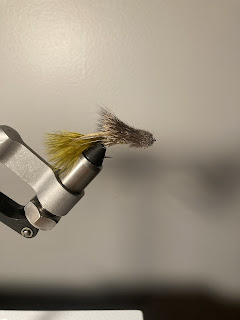Tying A Leggy Simi Seal Leech

The simi seal leech is a great pattern for warmwater or stillwater fishing. For this tutorial I added legs to the simi seal leech to give it more action than usual. Leech patterns always work exceptionally well when fished around dense cover or brush. Materials: 1. Simi seal dub 2. Streamer hook in your choice size 3. Rubber legs 4. A bead that fist with your hook 5. Thread Step 1. Put your bead on your hook and bring the thread back to the point where the bend of the hook begins. Step 2. V tie simi seal dub to create a tail and tie in 3 legs on either side of the hook. Step 3. Create a dubbing loop with simi seal dub to form the body of this fly. Step 4. Tie in 3 more legs on either side of the hook up front and whip finish. Your fly is now complete and ready to be fished. I recommend fishing this fly aggressively in still water to create motion with the legs. When fishing moving water you can fish this pattern a bit more slo...




